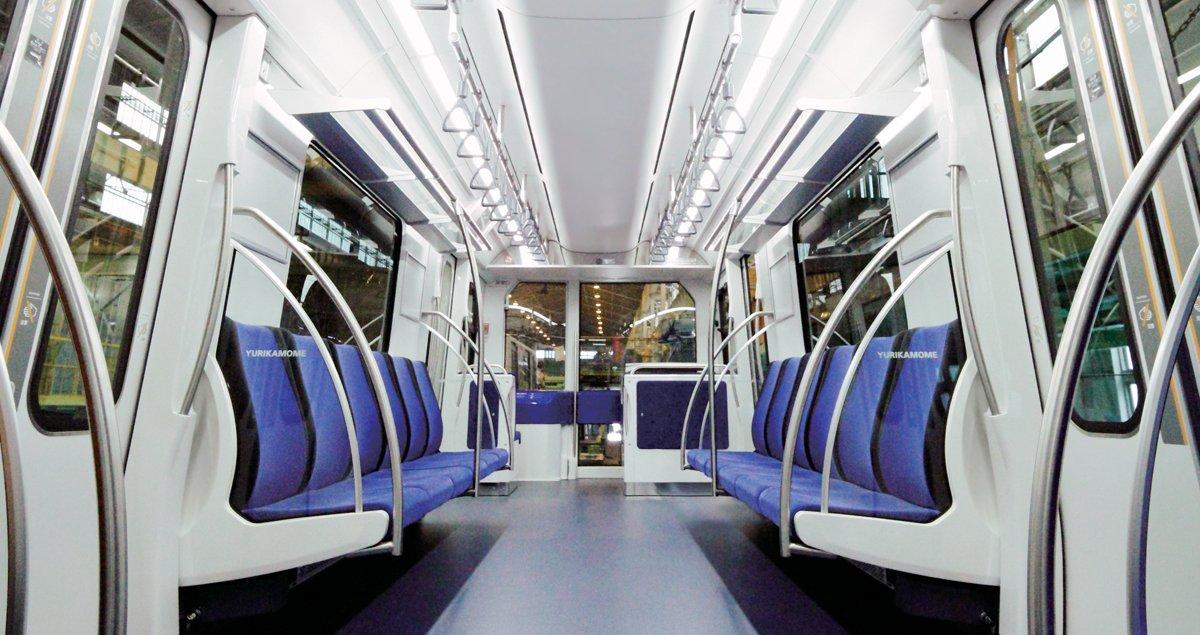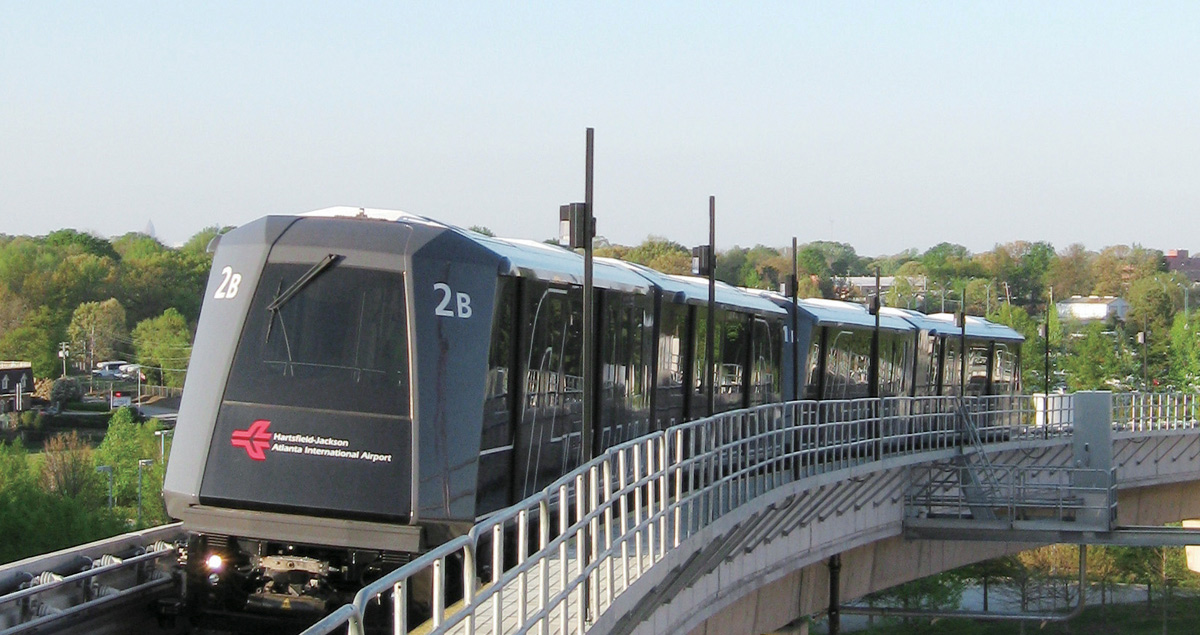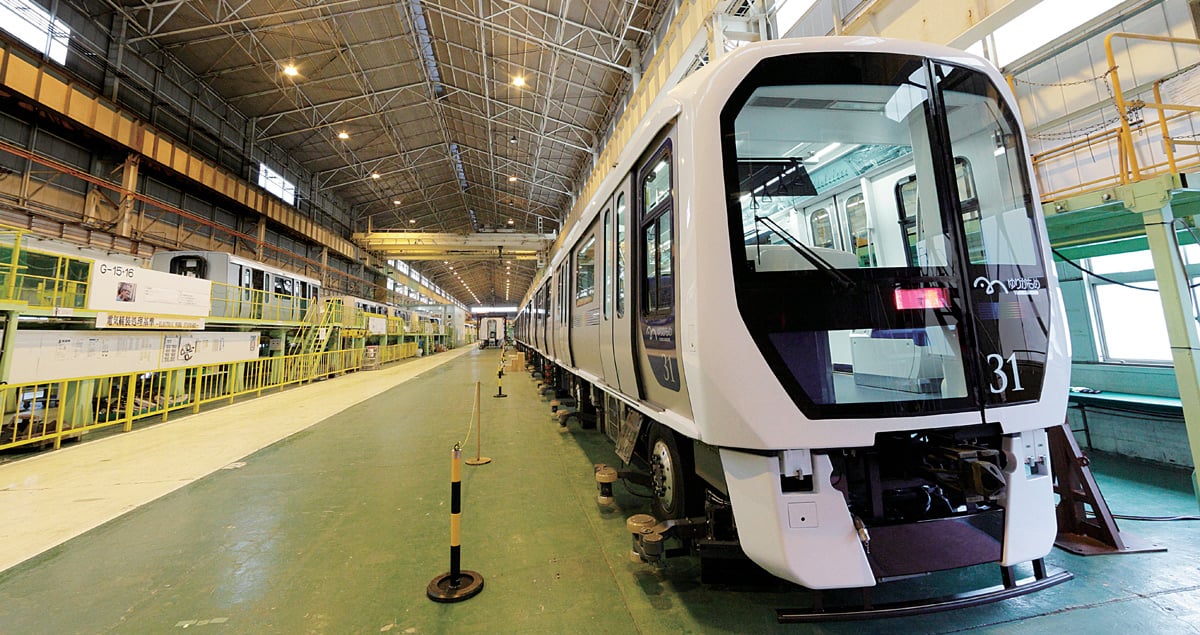At the Forefront of Urban Transportation

Index
MHI’s New Transit Systems Deliver Outstanding Cost Performance and Enhance Municipal Environments
Supporting the development of transportation infrastructure essential for cities
The transportation infrastructure that supports our daily lives has been continuously evolving. At the same time, the concentration of growing populations in urban areas stemming from economic development is leading to serious traffic congestion and environmental degradation. As a means for resolving these issues, large cities are extending subway lines and expanding other public transportation systems. The increased economic burden involved in the construction and operation of these systems, however, has heightened the need for a transportation infrastructure that can be built and operated at lower costs. As an alternative to conventional trains and buses, monorail and tram (Light Rail:LR) systems have emerged as new urban transportation systems. One of these systems is the new Automated Guideway Transit (AGT) that runs on rubber tires on elevated tracks constructed over existing roads.
The AGT offers a variable passenger carrying capacity, ranging from a small number of people per day to mass transport exceeding 100,000 people per day. In addition, the system boasts superior environmental performance as no exhaust gases are emitted and electrical power consumption is low, while use of rubber tires reduces noise and vibration. Moreover, the small size of the cars allows a high degree of freedom in route planning, enabling the system to be both scalable and extendable in urban areas. Economic operations are realized as these systems are driverless and fully automated.
In 1973, MHI launched the MAT System, which served as a model for all of its subsequent AGT systems. The company has since constructed many new AGTs, encompassing vehicle production and power supply facilities, and has built seven lines in major urban areas, from the Kobe Port Liner in 1981 to the Tokyo Nippori Toneri Liner in 2008. Together these Japanese lines carry more than 600,000 people daily and have become indispensable to contemporary city life.

Playing an active role in densely populated areas with superior cost efficiency and quietness
MHI’s AGT systems are now expanding worldwide. Starting in 1998, the company installed its first AGT overseas at the Hong Kong International Airport. This huge international airport hub introduced the system to efficiently transport people between its main terminal building and remote terminals. In recent years, however, Japan’s AGT systems have gained attention as means of transportation within cities, and applications are spreading to urban areas as well. In Singapore, AGT systems have been adopted in the country’s new towns satellite residential communities of populations on the order of 100,000 with lines becoming operational in Sengkang New Town in 2002 and in Punggol New Town in 2004. MHI designed and manufactured the “Crystal Mover” the AGTs delivered to Sengkang in Singapore as its AGT brand for overseas. The Crystal Mover has won Japan’s Good Design Award twice, and its reliability in terms of design and functionality is highly valued. To date, a total of 169 cars have been delivered for ten lines in six countries. Macau LRT (Light Rapid Transit) placed an order for AGTs with MHI in 2011 after considering competing systems from Europe, the U.S. and other countries. Construction is currently underway, with the goal of starting commercial operations in 2015. Vehicles named “Urbanismo” are destined to become MHI’s new stars of urban transportation, and their future introduction into other Asian countries is expected.

Meeting the needs of the market and era: ride quality, environmental performance and more
In order to create AGT systems that are even quieter as well as more comfortable and cost effective, the hallmarks of these systems, MHI continues to develop technologies based on the knowledge and experience gained from over 30 years of manufacturing. Since AGT cars run on rubber tires, they are able to achieve better gradeability and acceleration than railway cars, but the cars need to be lightweight in order to meet the allowable tire load limits. The company’s extensive experience in designing and manufacturing aluminum alloy vehicles has made today’s AGT cars lighter and more rigid, raising the quietness and cost efficiency to even higher levels. By modifying the structure of the bogie and lightening its components, MHI has succeeded in reducing car weight while still maintaining durability. In addition, application of shock absorbing mechanisms has reduced vertical and lateral shaking, further improving ride comfort. The car interior, too, has been completely revamped from the perspective of universal design, creating a vehicle that can be safely and comfortably used by passengers of all ages. These new cars also incorporate environmental design throughout by adopting features such as non painted bodies and oil free air compressors.
MHI serves the role of system integrator
MHI has set up a test line in a plant where the vehicles are manufactured and conducts performance evaluation tests after vehicle completion. This facility greatly reduces the time and amount of adjustments needed after delivery to the installation site. The MIHARA Test Center, designed to international standards is currently under construction and scheduled to be completed in 2014. The Center will include a 3.2 km railway loop and maintenance training facilities, railway, and AGT and HSST (high speed surface transport) test lines. Moreover, in 2007 for the Taiwan Shinkansen Project and in 2009 for the Dubai Metro Project, MHI implemented these transportation system projects from engineering, procurement, construction, and commissioning to safety validation. MHI is well versed in both project engineering and vehicle design and manufacturing and is one of the few companies in the world capable of system integration. The company provides highly reliable and safe transportation systems to locations throughout the world. Emerging countries are struggling to cope with chronic traffic congestion that accompanies rapid urbanization. Such regions have high hopes for new transit systems that can be built at a low cost and used by many people. In the future and based on its past experience, MHI will actively propose urban transit systems to these countries with elements matching their individual circumstances. A new track is being laid out in urban transit for countries around the world.





